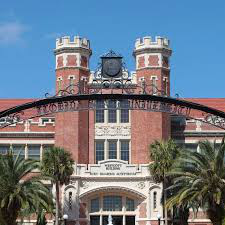Speaker
Description
Relativistic nuclear collision experiments explore the physics of dense and hot nuclear matter, the so-called quark-gluon plasma (QGP). The bulk properties of such matter can be inferred indirectly from the yields and correlations of the produced hadrons. Nevertheless, the relevant degrees of freedom of the QGP and are subject to the effects of multiple rescatterings and non- perturbative physics of hadronization, as described by Quantum Chromodynamics (QCD), which tend to erase information about the earlier stages of the collision. Electromagnetic probes, e.g., photons and dilepton production, are radiated throughout the evolution of a heavy ion collision (HIC) and, due to a lack of final-state interactions, can escape the medium virtually unscathed. Therefore, measuring their spectra and their correlations gives a unique window virtually to every stage of the evolution of the medium, the so-called fireball. In this talk I will give a brief introduction to such penetrating probes, their main properties and results, as well as the puzzles and challenges ahead.
| speaker affiliation | Universität Bielefeld |
|---|

